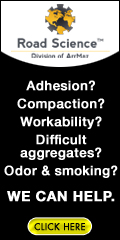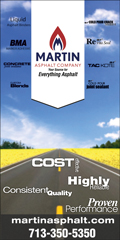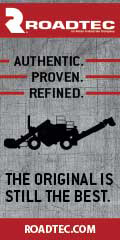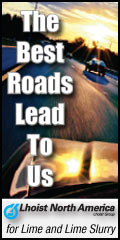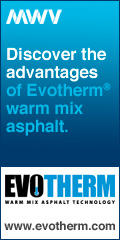| Friday, October 2, 2015 | ||
 |
 |
 |
| Past Issues | www.texasasphalt.org | Printer-Friendly | Subscribe | Advertise |
Environmental, Health and Safety Committee Brief
Environmental
Most membership organizations are likely impacted in some way by EPA’s hazardous waste rules, most of which can be very confusing and complex. If your operations include mechanic shops, painting/striping operations and hot mix labs, then the likelihood of those operations generating hazardous wastes is high. Many of the better degreasers and some lubricants contain chemicals that could cause a waste stream to be classified as hazardous. Hot mix labs might still have to use some chlorinated solvents for testing or cleaning, which would cause their wastes to become hazardous. Painting and rustproofing activities use products that contain various solvents that when disposed of become hazardous waste.
Pursuant to the current hazardous waste rules, EPA is proposing a new hazardous waste rule to strengthen environmental protection while reducing regulatory burden on businesses. According to EPA the rule will provide greater flexibility to industry while requiring new safeguards to protect the public from mismanagement of hazardous waste. Additionally, the proposed rule should enhance the safety of facilities, employees and the general public by improving labeling of hazardous waste and emergency planning and preparedness. The agency said the proposal also will reduce the regulatory burden by providing greater flexibility in how facilities and employees manage their hazardous waste and make the regulations easier to understand.
This proposed rule is to be published in the Federal Register very soon. TXAPA will monitor this rule as it makes its way through the EPA rulemaking process and inform the membership of its general impact to our industry.
If you have not done so already, it would be a good idea to assess the products your organization uses, to see if when disposed of, they would make a waste stream subject to EPA’s hazardous waste rules. If you can recycle the waste with a licensed recycler or replace a product containing a hazardous chemical with one that contains non-hazardous chemicals then you can avoid the hassles of the hazardous waste rules and in the long run save you time and money while at the same time protecting our environment. Going green just makes good business and safety sense.
Safety Looking for a way to push safety to the front line? The job hazard analysis (JHA) process is an effective way to improve safety behavior. JHA’s focus on continual improvement and give detailed information as to what the needs are within an organization. Three steps to a successful JHA process are identify, train and communicate.
Reminder:
By now you should have completed training with your employees on the Global Harmonized System (GHS) for labeling and the new Safety Data Sheet format (this training should have been completed as of December 1, 2013). These items have been incorporated into the newly revised OSHA Hazard Communication Standard.
As of December 1, 2015 all labels for chemical substances coming from the manufacturer will conform to the new GHS labeling format (employees should, or will need to, know how to interpret/read the new pictograms used on the labels).
As of June 1, 2016 for employers, all alternative workplace labeling and hazard communication program(s) must be updated as necessary to comply with the GHS, and additional employee training must be provided for newly identified physical or health hazards. |
Asphalt: Smooth | Durable | Quiet | Safe

